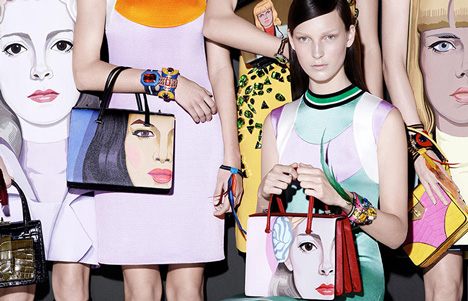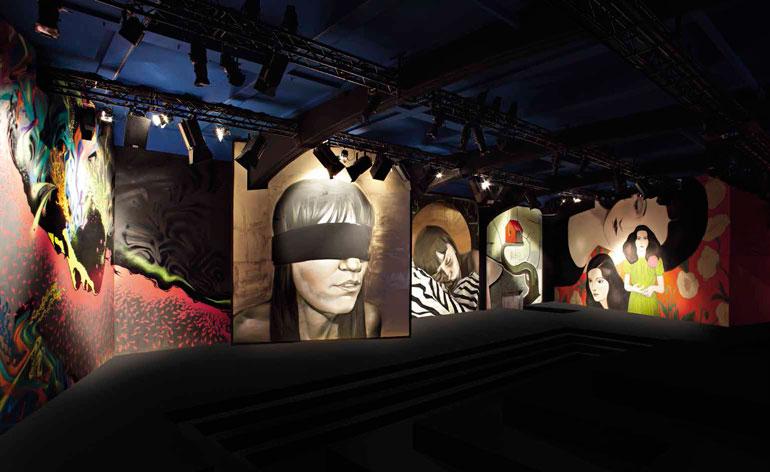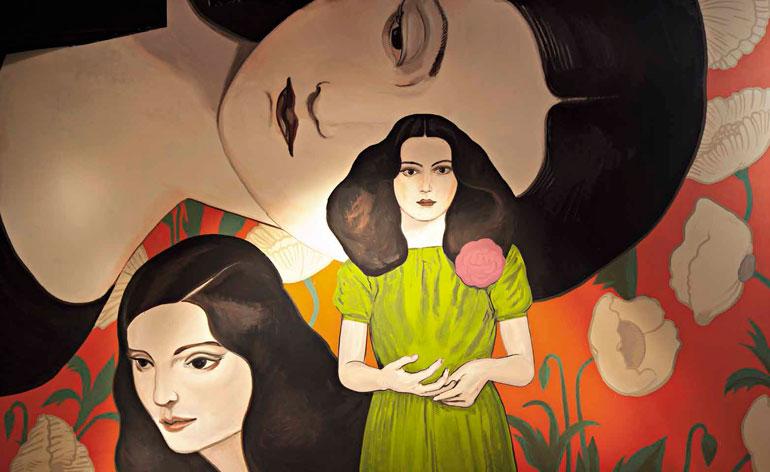When fashion gets a political twist empowered by art.
In 2014, the Italian luxury fashion brand Prada four commissioned street artists and two illustrators to design the set of the SS14 fashion show but also some of the patterns that were featured on the clothes. If Prada has been an active contributor to the cultural and artistic creation, mainly in Italy through its Fundazione Prada, this was the first time art was given such a prominent spot on the runway. This venturing into pop art and pop culture happened at a critical time for collaboration between art and fashion, more than 10 years after Louis Vuitton first collaboration with Stephen Sprouse, the industry was still defining the lines of what this type of collaboration were looking like, not only in terms of design but also in terms of structure and communication strategy.
The challenge, as is the case today, lies in empowering both sides of the partnerships, elevating fashion above consumerism and giving visibility and market value to the artists displayed. For pop art, there is an added layer of making a design popular and catchy but also to remain exclusive, luxurious, and exceptionally tasteful. What is more, this collection was highly political, as Muccia Prada was aiming at “inspiring women to struggle ” she said after the show, setting the tone for fashion as a part of consumers’ identities and cultural focus.
Muccia Prada, co-head of the eponymous Fundazione with Patrizzio Bertelli, CEO of Prada Group, since 1995, has been influential in giving rising contemporary artists visibility through several exhibition spaces in Milan, with the biggest permanent space opening in 2015. If other forms of artistic creation definitely impact her fashion, it has never been as direct as in 2014. The SS collection was probably one of the most original of the season and remains sartorial in fashion history, featuring vibrant colors and fur coats for summer, still a surprising feat for the queen of counterintuitive.



The first aspect of the collaboration involved the large set of the show, made by El Mac from the United States, Mesa from Spain, Gabriel Spencer from Canada, Stinkfish from Colombia, Jeanne Detallante and Pierre Mornet from France, all up and coming. The only guideline was “femininity, representation, power and multiplicity”, while the participative work was titled In the Heart of the Multitude. The murals disposition was inspired from the political street art of LA, Mexico and South America a la Diego Rivera or Jose Clemente Orozco. The second aspect of the collaboration was about the elevated sportswear-inspired clothes featuring women’s faces on dresses, coats and bags. According to Tim Blanks, her models were girl gangs coded by hair colors and graffitied eyelids, strengthening the political message. If Muccia Prada has long been recognized for her ability to marry seemingly contradictory aesthetic, this show went down in history as a skillful partnership between the larger than life street art and minimally detailed illustration, by putting them both out of context, inside for the street art, bigger than life for the illustrations, Muccia Prada shows that there are no strict rules in creation, in plastic art or in fashion.
This collection not only shows the power of artistic collaborations to elevate fashion to the rank of cultural masterpieces, it also enables it to amplify its political power. The show was disruptive and appealing in every aspect, from the design of the clothes, the choice of colors and materials, to the runway set and the strong political statement, precursor in 2014. Indeed, if brands have now embraced taking stances, especially to attract younger consumers concerned about a brand’s image and impact beyond a well-designed item, it was not as widespread almost 10 years ago, and the power of art to amplify fashion’s cultural relevance through well-rounded communication was far from being mastered. Muccia Prada sensed it back in 2014 and she has been followed by the likes of Maria Grazia Chiuri at Dior to name just one.














